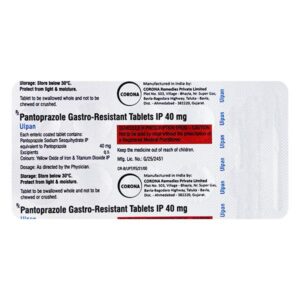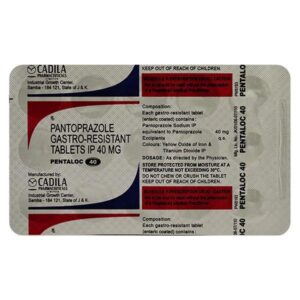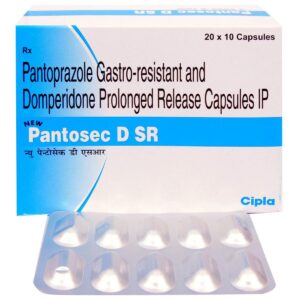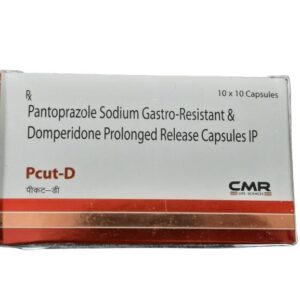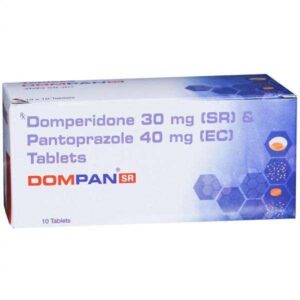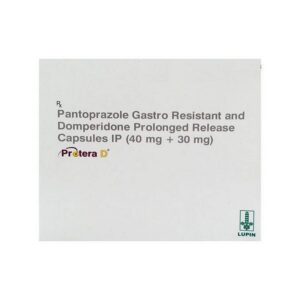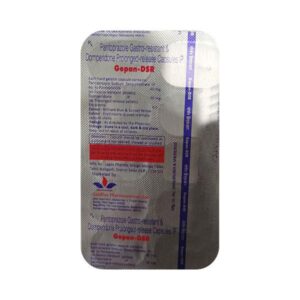DOMPERIDONE + PANTOPRAZOLE
Domperidone: Domperidone is a medication that is primarily used as an antiemetic, meaning it is used to prevent or relieve nausea and vomiting. It is also sometimes prescribed to aid in the treatment of gastrointestinal disorders such as gastroparesis and gastroesophageal reflux disease (GERD).
The mechanism of action of Domperidone involves blocking dopamine receptors in the brain and gastrointestinal tract. By doing so, it increases the movement or contractions of the stomach and intestines, which helps to enhance gastric emptying and relieve symptoms associated with delayed gastric emptying.
The usual recommended adult dose of Domperidone is 10-20 mg taken three to four times a day, before meals and at bedtime. The duration of treatment may vary depending on the condition being treated, and it is best to follow the instructions of a healthcare professional.
Like any medication, Domperidone has potential side effects. The common side effects may include headache, dizziness, drowsiness, dry mouth, stomach cramps, and diarrhea. These side effects are usually mild and temporary.
In some cases, Domperidone can cause serious side effects such as irregular heart rhythms (arrhythmias) and lactation disorders. It is important to seek immediate medical attention if experiencing chest pain, palpitations, or signs of allergic reactions such as rash, itching, or swelling.
It is worth noting that in some countries, Domperidone may have restrictions on its use due to concerns about its potential side effects on the heart. Before using Domperidone, it is advisable to consult a healthcare professional for proper evaluation and guidance.
Pantoprazole: Pantoprazole is a medication that is primarily used to reduce the amount of acid produced in the stomach. It is classified as a proton pump inhibitor (PPI) and is commonly prescribed for the treatment of conditions such as gastroesophageal reflux disease (GERD), stomach ulcers, and Zollinger-Ellison syndrome.
The mechanism of action of Pantoprazole involves its ability to inhibit the enzyme responsible for the final step in the production of stomach acid. By blocking this enzyme, known as the proton pump, Pantoprazole reduces the production of acid, leading to a decrease in the acidity of the stomach.
The usual recommended dose for Pantoprazole varies depending on the condition being treated. For GERD and stomach ulcers, the typical dose is 40 mg once daily. In some cases, the dose may be adjusted based on individual patient needs or as directed by a healthcare professional.
While Pantoprazole is generally well-tolerated, it may cause some side effects. Common side effects include headache, diarrhea, nausea, abdominal pain, and flatulence. Less common but more severe side effects may include an allergic reaction, severe stomach pain, severe diarrhea, and low magnesium levels. It is important to seek medical attention if any severe side effects occur.
As with any medication, it is essential to discuss all potential risks and side effects with a healthcare professional before starting Pantoprazole. They can provide personalized guidance based on an individual’s medical history and current medications.


